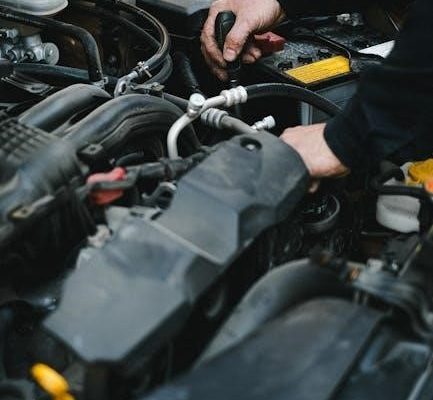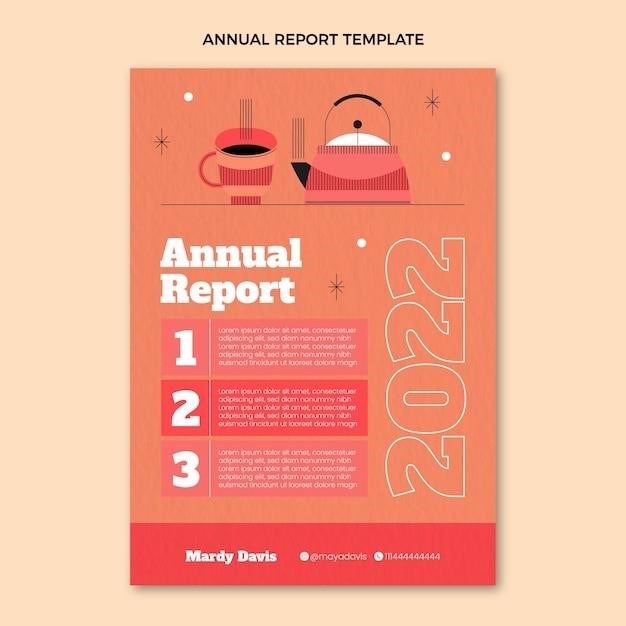Animal Farm Study Guide⁚ Key Questions & Answers
This comprehensive guide provides key questions and answers for George Orwell’s allegorical novella, Animal Farm․ Explore pivotal themes, character analyses, and historical context․ Downloadable PDF resources are available online for further study․ Access chapter-by-chapter analyses and delve into the symbolism and propaganda employed throughout the narrative․ Examine Napoleon’s rise to power and the corruption of the Seven Commandments․ Gain a deeper understanding of this classic work of literature․
Chapter-by-Chapter Analysis & Questions
This section offers a detailed, chapter-by-chapter exploration of George Orwell’s Animal Farm, accompanied by insightful questions to deepen your understanding․ Chapter 1 introduces Old Major’s pivotal dream and the animals’ initial rebellion․ Analyze the animals’ motivations and the symbolic significance of Old Major’s vision․ Chapter 2 delves into the creation of Animalism and the expulsion of Farmer Jones․ Discuss the practical challenges faced by the animals in establishing their new society․ Chapter 3 marks the emergence of Napoleon and Snowball as leaders, highlighting their contrasting ideologies and methods․ Consider the implications of their differing approaches to farm management․ Chapter 4 examines the Battle of the Cowshed and its impact on the animals’ sense of unity and security․ Analyze the significance of this battle as a turning point in the narrative․ Subsequent chapters meticulously track the pigs’ gradual consolidation of power, the manipulation of propaganda, and the ultimate betrayal of the original ideals of Animalism․ Each chapter analysis includes thought-provoking questions to stimulate critical thinking and enhance comprehension of the novel’s complex themes and narrative arcs․ Explore the subtle shifts in power dynamics and the erosion of the animals’ freedoms․
Major Themes in Animal Farm
Animal Farm explores several profound themes․ The abuse of power is central, illustrated by Napoleon’s ruthless ascent and the pigs’ manipulation of the other animals․ Corruption is another key theme, as the initial idealistic principles of Animalism are gradually eroded by the pigs’ self-serving actions․ The dangers of unchecked power and the seductive nature of totalitarianism are explored through Napoleon’s dictatorial rule and the suppression of dissent․ Propaganda and manipulation are also significant, showcasing how language and information can be twisted to control the masses․ The novel examines the fragility of revolution and the ease with which idealistic goals can be subverted․ Inequality, despite the initial aim of equality among animals, becomes a dominant characteristic of the new regime․ The theme of betrayal is pervasive, as the pigs systematically betray the trust and expectations of the other animals․ Through these intertwined themes, Orwell crafts a cautionary tale about the dangers of unchecked power and the importance of vigilance against those who would exploit others for their own gain․ The constant struggle for power and the insidious nature of propaganda create a compelling exploration of societal dynamics and the seductive lure of authoritarianism;
Character Analysis⁚ Pigs, Dogs, and Other Animals
The characters in Animal Farm are allegorical representations of historical figures and social classes․ Napoleon, the ruthless leader, embodies Stalin’s dictatorial power․ His loyal dogs symbolize the blind obedience of the secret police․ Snowball, initially idealistic but ultimately outmaneuvered, represents Trotsky’s revolutionary zeal․ The other animals represent the exploited working class, initially hopeful but gradually disillusioned and oppressed․ Boxer, the strong and hardworking cart-horse, symbolizes the unwavering loyalty of the proletariat, easily manipulated despite his immense strength․ Benjamin, the cynical donkey, represents skepticism and disillusionment, observing the unfolding events with quiet pessimism․ Squealer, the manipulative pig, embodies the power of propaganda and the distortion of truth․ Moses, the raven, represents religious dogma and false promises․ Each character’s actions and motivations contribute to the narrative’s exploration of power, revolution, and societal control․ The contrast between the pigs’ increasingly privileged lives and the relentless toil of the other animals underscores the themes of inequality and exploitation central to Orwell’s allegorical satire․
Allegory and Symbolism in Animal Farm
Orwell masterfully employs allegory and symbolism to critique the Soviet Union and totalitarian regimes․ The animals represent different social classes within the Russian Revolution⁚ the pigs as the Bolshevik leaders, the dogs as the secret police, and the other animals as the working class․ Old Major’s dream symbolizes the initial promise of equality and revolution, while the farm itself represents Russia․ The changing of the Seven Commandments mirrors the Soviet government’s manipulation of ideology and the gradual erosion of revolutionary ideals․ The windmill symbolizes the ambitious but ultimately futile projects undertaken by totalitarian regimes․ Boxer’s unwavering loyalty and eventual betrayal highlight the manipulation and exploitation of the working class․ The battle between Snowball and Napoleon represents the power struggle between Trotsky and Stalin․ The pigs’ acquisition of human characteristics symbolizes the corruption and betrayal of revolutionary principles․ The use of these symbols allows Orwell to explore complex political themes through a seemingly simple animal fable․ Understanding these symbolic representations enhances the reader’s appreciation of the novel’s deeper meaning and its enduring relevance․
Historical Context⁚ The Russian Revolution
Animal Farm is deeply rooted in the historical context of the Russian Revolution of 1917․ Orwell, a keen observer of political events, uses the animal fable to satirize the revolution’s trajectory and its eventual descent into Stalinist totalitarianism․ Old Major’s revolutionary ideas mirror those of Karl Marx, advocating for a classless society․ The initial overthrow of Farmer Jones parallels the Bolsheviks’ seizure of power from the Tsarist regime․ Snowball’s idealistic plans for modernization and improvement reflect the early hopes for progress and equality․ Napoleon’s ruthless consolidation of power mirrors Stalin’s rise to supreme authority through cunning manipulation and purges․ The manipulation of language and propaganda employed by the pigs mirrors the Soviet government’s control over information․ The eventual collapse of the revolution into tyranny and oppression reflects the realities of Stalin’s rule․ Understanding the historical parallels enhances the reader’s appreciation of Orwell’s critique of totalitarian regimes and the dangers of unchecked power․ The novel serves as a potent warning against the seductive allure of revolution gone awry․
Power and Corruption⁚ Napoleon’s Rise to Power
Napoleon’s ascent to power in Animal Farm serves as a chilling illustration of how ambition and ruthlessness can corrupt even the most idealistic of revolutions․ Initially presented as a shrewd but pragmatic leader, Napoleon gradually consolidates his authority through cunning manipulation and violence․ He uses his loyal dogs to intimidate and silence opponents, exemplified by his brutal expulsion of Snowball․ The systematic rewriting of history and the manipulation of the Seven Commandments demonstrate Napoleon’s control over information and his disregard for the principles of Animalism․ His transformation from a seemingly benevolent leader to a tyrannical dictator highlights the seductive nature of power and the ease with which it can be abused․ The pigs’ appropriation of resources and their increasingly opulent lifestyle epitomize the corruption that undermines the revolution’s original ideals․ Napoleon’s reign of terror underscores the dangers of unchecked power and the fragility of utopian visions in the face of human (or in this case, animal) nature․ His rise highlights the importance of vigilance and the need for checks and balances to prevent the abuse of power․
The Seven Commandments and Their Transformation
The Seven Commandments in George Orwell’s Animal Farm initially represent the idealistic principles of Animalism, promising equality and fairness for all animals․ However, these commandments undergo a gradual and insidious transformation under Napoleon’s rule, mirroring the erosion of revolutionary ideals in totalitarian regimes․ Initially etched in stone, they become increasingly vague and malleable, reflecting Napoleon’s growing power and the pigs’ self-serving interpretations․ The subtle changes—such as “No animal shall sleep in a bed” morphing into “No animal shall sleep in a bed with sheets“—demonstrate the pigs’ gradual appropriation of privileges and the erosion of the animals’ rights․ This manipulation of language and the rewriting of history highlight the power of propaganda and the ease with which truth can be distorted to maintain control․ The ultimate reduction of the commandments to the single phrase, “All animals are equal, but some animals are more equal than others,” starkly reveals the complete subversion of the original egalitarian principles․ This symbolic dismantling of the Seven Commandments powerfully illustrates the dangers of unchecked power and the fragility of revolutionary ideals․
Propaganda and Manipulation in Animal Farm
Orwell masterfully depicts the insidious role of propaganda and manipulation in Animal Farm․ Squealer, Napoleon’s mouthpiece, skillfully employs rhetoric and misinformation to control the other animals’ perceptions and maintain the pigs’ authority․ He distorts facts, rewrites history, and uses emotionally charged language to sway public opinion․ The manipulation extends beyond Squealer’s speeches; the pigs control the dissemination of information, limiting access to counter-narratives and ensuring the animals remain ignorant of the pigs’ true intentions․ The altering of the Seven Commandments exemplifies this manipulation, demonstrating how language can be twisted to justify oppression and maintain power․ The constant surveillance and intimidation tactics employed by the dogs further stifle dissent and create an atmosphere of fear․ The use of symbols, such as the flags and songs, reinforces the propaganda, creating a sense of unity and loyalty that masks the underlying tyranny․ This intricate system of propaganda and manipulation effectively illustrates how totalitarian regimes maintain control through the calculated dissemination of information and the suppression of opposing viewpoints․
Key Vocabulary and Literary Devices
Understanding key vocabulary is crucial to grasping the nuances of Animal Farm․ Terms like “Animalism,” “comrades,” and “Beasts of England” represent core ideological concepts․ Analyzing the evolving meaning of words like “equal” and “freedom” reveals the pigs’ gradual corruption of the revolution’s ideals․ Orwell masterfully employs literary devices to enhance the narrative’s impact․ Allegory, the use of characters and events to represent abstract ideas, is central to the story’s meaning․ Satire, a sharp critique of society through humor and exaggeration, is evident in the pigs’ behavior and the animals’ naive acceptance of their increasingly oppressive rule․ Irony, the contrast between expectation and reality, pervades the narrative, highlighting the betrayal of the revolution’s ideals․ The use of fable-like simplicity contrasts with the complex political themes, making the story both accessible and thought-provoking․ Understanding these literary devices and key vocabulary unlocks a deeper appreciation for Orwell’s satirical masterpiece and its enduring relevance․
Comparative Analysis⁚ Animal Farm and the Russian Revolution
Animal Farm serves as a powerful allegory for the Russian Revolution and the subsequent Stalinist era․ Direct parallels exist between the characters and events in the novel and historical figures and events in Russia․ Old Major mirrors Karl Marx, whose ideas inspired the revolution․ The initial animal rebellion reflects the overthrow of the Tsarist regime․ Napoleon’s rise to power mirrors Stalin’s consolidation of authority, utilizing propaganda, violence, and the manipulation of loyal followers (the dogs)․ Snowball, representing Leon Trotsky, is portrayed as an idealistic but ultimately ineffective revolutionary․ The pigs’ appropriation of human characteristics symbolizes the corruption of the revolution’s ideals․ The rewriting of history and the manipulation of language echo Stalin’s totalitarian control․ Analyzing these parallels reveals Orwell’s critique of totalitarian regimes and the dangers of unchecked power․ By understanding the historical context, readers gain a deeper understanding of the novel’s satirical intent and its enduring relevance to political systems throughout history․ The comparative analysis reveals the timeless nature of Orwell’s warning against tyranny․
Study Guide Resources⁚ PDFs and Online Materials
Numerous online resources offer comprehensive study guides for George Orwell’s Animal Farm․ Many websites provide chapter-by-chapter summaries, character analyses, theme explorations, and historical context information․ These resources often include downloadable PDFs containing quizzes, vocabulary lists, and essay prompts․ Some sites offer interactive exercises and online discussion forums where students can engage with others studying the novel․ Educational platforms and online bookstores frequently provide study guides aligned with specific curricula․ These resources can significantly enhance understanding and facilitate in-depth analysis․ Searching for “Animal Farm study guide PDF” or similar terms will yield a wealth of materials, ranging from concise summaries to extensive critical analyses․ Remember to evaluate the credibility and accuracy of sources before relying on them for academic work․ Utilizing a combination of online and print resources ensures a well-rounded approach to studying this important work․

